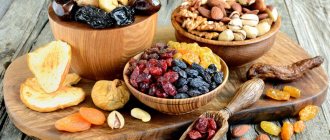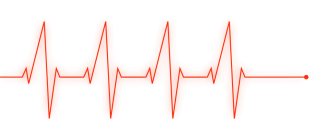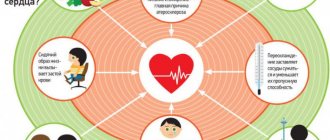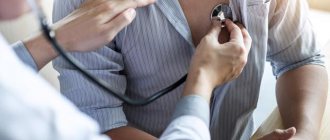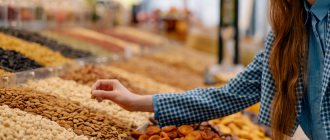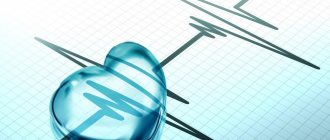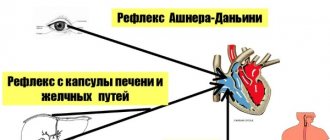General description of the disease
Tachycardia is an acceleration of the heart rate, which occurs as a reaction to increased body temperature, emotional and physical stress, smoking, alcohol consumption, decreased blood pressure (as a result of bleeding) and hemoglobin levels (for example, with anemia), with increased thyroid function glands, malignant tumors, purulent infection, use of certain medications. Also, tachycardia can be caused by pathology of the heart muscle, disturbances in the electrical conductivity of the heart.
Reasons for the development of tachycardia
- excessive consumption of caffeine-containing products;
- diseases of the cardiovascular system (heart disease, ischemia, heart attack, hypertension);
- disease of the thyroid gland and endocrine system;
- infectious diseases;
- pregnancy.
Types of tachycardia
physiological, short-term and pathological tachycardia.
Signs of tachycardia:
darkening in the eyes, pain in the chest, rapid heart rate at rest and without objective reasons, frequent dizziness, repeated loss of consciousness.
Consequences of tachycardia
wear and tear of the heart muscle, heart failure, impaired electrical conductivity of the heart and the rhythm of its work, arrhythmic shock, acute cerebral circulatory failure, thromboembolism of cerebral vessels and pulmonary arteries, ventricular fibrillation.
Characteristic properties of tachycardia
The occurrence of tachycardia against the background of intentional stimulation of the heart or the influence of external circumstances is not considered a pathology. The need for short-term or long-term medical care arises when it accompanies a disease and causes unwanted symptoms in a person.
Types of manifestations of tachycardia
- the occurrence of dizziness;
- the appearance of shortness of breath;
- increased heart rate against a background of general weakness and pallor;
- increased pain in the chest and heart area;
- increased sweating.
Tachycardia can be caused by:
- External factors: physical activity, temperature changes, stress, emotional and nervous stress, stimulants.
- Pathogenic factors: hemodynamic disturbances, cardiac arrhythmia, diseases of the endocrine and autonomic nervous systems.
Sinus, ventricular and supraventricular are the main generalized forms of tachycardia.
Do not self-medicate. Consult a specialist:
Sinus tachycardia is characteristic of all age groups of people; it is the body’s response to physical and emotional stress. Her heart rate is not much higher than normal, the contractions are correct, and the ECG complexes have a normal configuration. Sometimes sinus tachycardia manifests itself in pathological conditions: fever, hyperthyroidism, anemia.
Supraventricular tachycardia is a pathology caused by disturbances in the occurrence or transmission of impulses in the atrial myocardium. There are AV nodal reciprocal tachycardia, atrial tachycardia and that occurring with pre-excitation syndrome. This type causes discomfort and leads to the development of circulatory failure.
You get promotional code OZON - 300 points for your first order. OZONAPIE1I (applied in the cart)
Ventricular tachycardia manifests itself in the form of an abrupt increase in heart rate of more than 120 beats per minute, lasting up to 30 seconds (unsustained) and more than 30 seconds (paroxysmal), which can lead to the development of ventricular fibrillation and sudden cardiac arrest. The occurrence of such attacks requires immediate consultation with a doctor and medical assistance.
Symptoms of tachycardia can be minor and quickly disappear or significant and persistent; in any case, it is necessary to be attentive to its appearance, maintain an active lifestyle and adhere to proper nutrition.
Tachycardia, symptoms, treatment, prevention
A healthy person does not feel the normal functioning of his heart. Therefore, the appearance of a feeling of irregular beating
This vital organ should be
a reason to consult a doctor.
Usually in such cases, the cardiologist diagnoses the most common type of arrhythmia -
tachycardia
.
It is important to know what you can or cannot do when this disease appears. What is tachycardia?
The term “tachycardia” refers to a painful increase in the number of heart contractions.
In this case, the person feels anxiety, discomfort, dizziness, and may lose consciousness. The heart rhythm, as a rule, remains the same with equal intervals between contractions, and the number of beats can reach more than 90 per minute. Symptoms of the disease
Tachycardia is characterized by the severity, duration and characteristics of the disease.
The main symptoms of the disease are an abnormally rapid, persistent heartbeat, which a person can feel and feel discomfort. Can appear:
- weakness
- anxiety
- dyspnea
- fatigue increases
- problems with sleep, rest, and appetite appear
- performance and productivity
- general condition and mood worsen
The severity of symptoms depends on the individual characteristics of the nervous system of a particular person and concomitant diseases. For example, in the presence of other diseases of the cardiovascular system, angina may occur - a feeling of pressure and heaviness in the sternum. Since with tachycardia there is a decrease in the ejection of blood from the heart into the vessels, the full blood supply to tissues and organs is disrupted, pressure decreases, and the temperature of the extremities drops. If the blood vessels of the brain are affected, neurological disorders and seizures may develop. What should you do if you have tachycardia?
Tachycardia occurs in the form of a sudden attack.
In this case, you can provide help yourself or resort to the help of other people. First of all, you need to provide the necessary amount of air for the victim
- unfasten tight clothes, open windows and doors.
After this, it is necessary to take sedatives
: Corvalol, Valocordin, tincture of valerian, motherwort, evasive peony.
Then apply a cold compress to your forehead or wash your face with cool water. If the condition worsens, call an ambulance.
To independently overcome attacks of tachycardia, it is recommended to apply pressure on closed eyeballs for several seconds. You can also take a deep breath and hold your breath, lower your face into cold water.
What should not be done with tachycardia?
First of all, when tachycardia appears, you should not self-medicate. You should immediately consult a doctor and undergo a full diagnosis. If the disease appears for the first time, you should immediately give up foods and medications containing caffeine, as well as spicy foods, chocolate, alcohol and cigarettes. If an abnormal heartbeat occurs, excessive physical activity, stress, and mental tension must be excluded. Training in methods of adequately responding to stress is recommended.
Features of the diet for tachycardia
Tachycardia, in any of its manifestations, puts a strain on the human cardiovascular system. In order to ease the symptoms of the disease and avoid complications, it is necessary to lead a correct lifestyle, get rid of bad habits, engage in physical exercise and follow nutritional rules. A distinction is made between foods that contribute to the development of tachycardia and foods that help in its prevention. Following a diet is not a way to treat tachycardia, but by eliminating harmful foods and adding healthy ones, you can alleviate or prevent heart disease, which is the cause of its occurrence.
Basics of diet for tachycardia
The diet is based on the choice of foods, preferably with low calorie content and vitamin and mineral composition. Preference is given to dairy-vegetable foods with minimal fat content, the consumption of table salt and foods that stimulate the nervous system is excluded or minimized.
The daily energy value of food should not be more than 2200 - 2500 kcal, and if you are overweight - no more than 2000 kcal. The ratio of proteins/fats/carbohydrates should be 25%/10%/65%, with 60% animal proteins and at least 30% vegetable fats. Be sure to follow the rules of separate meals. Meals are taken 4-5 times a day, the last meal no later than two hours before bedtime. It is recommended to boil, steam, bake; fried or smoked food is not allowed.
Recommended products for tachycardia:
- dietary meats (chicken, turkey, rabbit, lean beef, veal);
- fish (pollock, pike perch, perch, roach);
- milk and fermented milk products with low and zero calorie content (kefir, cottage cheese, hard cheese, fermented baked milk);
- cereals (oats, millet, buckwheat, rice, pearl barley);
- dietary and/or bran bread;
- vegetables (zucchini, carrots, beets, cabbage, tomatoes, celery, parsley);
- fruits, dried fruits and berries (raisins, dried apricots, prunes, apples, grapefruit);
- products that contain potassium, magnesium, iron (greens, legumes, seaweed, dates, chokeberry, almonds);
- nuts, honey and vegetable oils in small quantities.
When choosing products, it is necessary to give preference to those that are absorbed more slowly, they have a beneficial effect on the digestive system and have lower calorie content. A large amount of vegetables and fruits in the diet reduces the incidence of cardiovascular diseases by a third; they are considered an essential source of vitamins, minerals and antioxidants. If the levels of microelements in the body are low, the consumption of vegetables and fruits rich in potassium, iron and magnesium must be supplemented with prescribed medications.
Products not recommended for tachycardia:
- fatty, smoked, fried, spicy and salty foods;
- conservation;
- eggs (no more than one per day);
- chocolate, flour products;
- caffeine, carbonated drinks, alcohol.
It is recommended to reduce the amount of black and green tea, they contain a lot of caffeine, which causes heart palpitations. Chocolate also contains caffeine; it is permissible to consume no more than 2-3 pieces of it per day. Spices, canned food, and energy drinks act as activators on the nervous system; it is recommended to exclude them from the diet, like table salt. It is better to lightly salt food immediately before serving. Foods with a lot of cholesterol are also excluded from the diet. Also, you should not overuse coarse plant fiber; it takes a long time to digest and can create excessive stress on the intestines.
Drinking regime
Water is involved in all biochemical processes in the body. It is involved in the processes of digestion, blood circulation, thermoregulation, and helps remove toxins and excess salt from the body. For tachycardia, you can consume no more than one and a half liters per day; its excess increases the volume of circulating blood and increases the load on the heart and blood vessels. The drinking regime includes all liquid that enters the body with ordinary water, drinks, decoctions, soups, and fruits. People with an unstable mental state are recommended to use decoctions and infusions of soothing herbs (valerian, lemon balm, mint, chamomile).
Useful foods for tachycardia
The diet for tachycardia should be based on the following principles:
- 1 regular meal;
- 2 small servings;
- 3 abstaining from food at night;
- 4 limiting sweets;
- 5 spend fasting days;
- 6 the daily dose of fat should be no more than 50 g;
- 7 high content of foods rich in magnesium and potassium;
- 8 low calorie content.
It is also recommended to use a dairy-vegetable diet.
Useful products include:
- honey (improves blood supply to the heart and dilates blood vessels);
- foods with high levels of iron, magnesium and potassium (raisins, dried apricots and apricots, cherries, chokeberries, almonds, celery, grapefruits, grapes, dates, figs, prunes, parsley, cabbage, black currants, celery root, pineapples, bananas, dogwoods and peaches);
- rye and wheat bran;
- nuts;
- rosehip decoction or herbal tea (strengthens the heart muscle);
- fresh raw vegetables, baked or chopped (for example: Jerusalem artichoke, eggplant, beets) and vegetable salads, as they contain many microelements and vitamins with a small amount of calories;
- fresh fruits, berries (for example: viburnum, rowan, lingonberry), juices, compotes, mousses, jelly, jelly from them;
- dried fruits;
- protein steam omelet, soft-boiled eggs (no more than one egg per day);
- fermented milk products (yogurt, kefir, low-fat cottage cheese), whole milk, sour cream (as a dressing for dishes);
- porridge with milk or water, cereals and puddings;
- bran bread, day-old bread;
- cold beetroot soup, vegetarian soups from vegetables and cereals, fruit and milk soups;
- lean varieties of pork, beef, turkey and chicken, veal (steamed, oven-cooked or minced meat);
- low-fat varieties of boiled or baked fish, in the form of cutlets, meatballs, meatballs;
- mild sauces based on vegetable broth (for example: milk, sour cream, fruit sauces);
- sunflower, corn, flaxseed and other types of vegetable oil (up to 15 grams per day).
Folk remedies for tachycardia
- herbal teas from mint, lemon balm, hawthorn, motherwort and valerian;
- sachet pillows (for example: with valerian root);
- a soothing collection of valerian root and dry mint (place two spoons of the collection in a thermos, fill half with boiling water, leave for two hours, store in the refrigerator for no more than a month) take a glass of infusion during an attack in small sips;
- infusion of horsetail and hawthorn (pour two tablespoons of a mixture of herbs with boiling water in an enamel container, leave for three hours with the lid tightly closed, strain) take half a glass twice a day for three weeks);
- an infusion of hop cones and mint (use one teaspoon of the mixture per glass of boiling water, leave for ten minutes) drink in small sips at a time;
- elderberries and honeysuckle (raw, berry jam);
- decoction of elderberry bark (2 tablespoons of crushed bark per liter of boiling water, boil for ten minutes) take a decoction of 100 grams in the morning and evening.
Dangerous and harmful products for tachycardia
Alcoholic, energy and caffeine-containing drinks, strong tea, fatty, hot, spicy and salty foods, sour cream, eggs (more than one per day, omelettes, hard-boiled eggs), smoked foods, seasonings and sauces with high fat levels, salt and products that contain soda (biscuits, bread, carbonated drinks) as they contain sodium, which is harmful to the cardiovascular system.
Attention! The information is for informational purposes only and is not intended to make a diagnosis or prescribe treatment. Always consult a specialized doctor!
Authors: Anna Shelestun, Tatyana Eliseeva Ask a question
Rating:
10
/10
Votes: 9
Usefulness of material 10
Reliability of information 10
Formatting of Article 10
Recommended menu for the week
Taking into account the rules of separate meals and recommendations for eating during tachycardia, we will draw up an approximate menu for one week - 7 days.
The first day
Breakfast: millet porridge (with low-fat milk or water) with prunes, a glass of birch sap.
Afternoon snack: low-fat cottage cheese, apple.
Lunch: vegetable soup, boiled chicken breast, buckwheat, bran bread.
Dinner: boiled fish, side dish of asparagus, greens and cucumber salad, orange.
Second dinner: kefir.
Second day
Breakfast: oatmeal with raisins, dried fruit compote.
Afternoon snack: grapefruit, low-fat yogurt.
Lunch: chicken broth, rice with baked fish and vegetables, diet bread.
Dinner: steamed cutlets, baked potatoes, beet salad.
Second dinner: cottage cheese casserole, herbal tea.
Day three
Breakfast: hard-boiled egg, ginger tea.
Afternoon snack: banana, small handful of nuts.
Lunch: lean borscht, rabbit fillet baked in the oven with potatoes, vegetable salad of greens, cabbage and tomatoes, black bread.
Dinner: buckwheat with meatballs, boiled vegetables.
Second dinner: fruit salad, green tea.
Day four
Breakfast: cottage cheese casserole with dried fruits, freshly squeezed juice.
Afternoon snack: orange, jelly.
Lunch: pea soup, boiled chicken fillet, boiled potatoes, seaweed, bran bread.
Dinner: baked fish, boiled pasta, carrot salad.
Second dinner: kefir with bran bread.
Day five
Breakfast: oatmeal with dried apricots, herbal tea.
Afternoon snack: applesauce.
Lunch: vegetable soup, barley with boiled lean beef, boiled beet salad, black bread.
Dinner: casserole with chicken and zucchini, kefir.
Second dinner: low-fat yogurt, banana.
Day six
Breakfast: cheesecakes, carrot juice.
Afternoon snack: kefir, nuts.
Lunch: pumpkin puree soup, fish balls, baked potatoes, bran bread.
Dinner: rice with steamed fish, vinaigrette, apple.
Second dinner: semolina porridge with candied fruits.
Day seven
Breakfast: millet porridge, fruit tea.
Afternoon snack: bread with cottage cheese and berries.
Lunch: rice soup with meatballs, boiled turkey with a side dish of broccoli and cauliflower, black bread, tomato juice.
Dinner: potato and lentil casserole, boiled fish, green tea with bread.
Second dinner: fruit salad, birch sap.
The main principle of the diet is the most varied and balanced diet. It is important to monitor the caloric content and balance of food.
Fasting days for tachycardia
Fasting days are allowed after the approval of the attending physician and more often than once every two weeks, so as not to create additional stress for the body. On fasting days, complete fasting is not allowed; this can be a cottage cheese, fermented milk or fruit and vegetable day.
